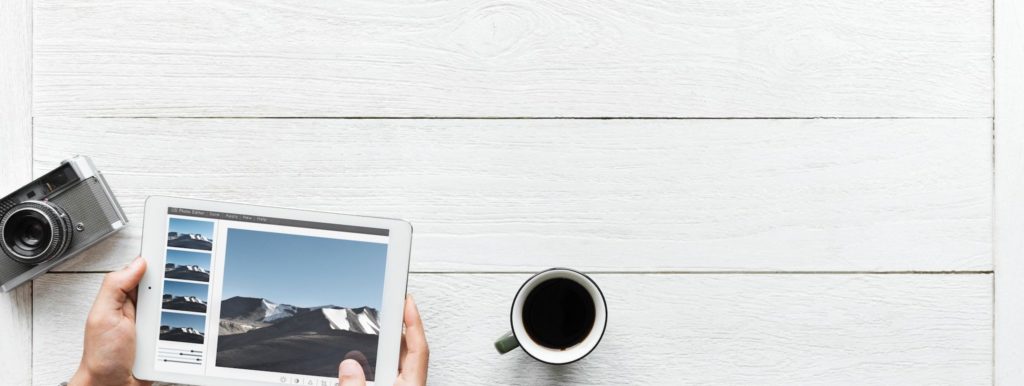You’re browsing through holiday rental listings online and see what looks like your ideal place to stay. It’s the right location, with the right kind of amenities, but something doesn’t quite feel right. The price feels too good to be true, and the photos don’t look authentic. Your gut tells you to click away – but do you?
The problem of fraudulent listings and photos has exploded in the last couple of years, and although you may have been fortunate enough to avoid fake holiday accommodation, sadly thousands of others have not been so lucky.
I-PRAC conducts thorough checks on holiday property agencies and owners, including listing and image checks, to make sure they are the genuine article. But it can be difficult for you to determine whether pictures are authentic while browsing, so here are a few simple checks you can do yourself without becoming a photoshop expert.
Utilise Google Maps
This is a useful tactic that doesn’t need any image analysis software. Simply enter the property’s address into Google Maps, zoom in on the satellite image and go to Street View. This will enable you to see for yourself if the property is actually at the address stated and looks as it appears in the listing photos. If you find yourself looking at a rather different building, then you know something is wrong!
Street View will also give you an accurate guide to the state of the neighbourhood and surrounding amenities, and is worth using even when you know the property is genuine.
Reverse Image Search
If you suspect an image might have been hijacked, you can easily check to see if it appears elsewhere. Google allows you to search on images as well as words, and if the same photo appears on a variety of websites, then it could be suspect.
Here’s how to do a reverse image search on Google:
- Right-click on an image in the listing and select ‘Copy image address’ (or ‘Save image’ to download a copy to your computer).
- Open a Google search window and click on ‘Images’ – this will bring up the Google Images search window.
- Click on the camera icon to search by image – this will bring up a small search panel.
- Paste the image address under the ‘Paste image URL’ tab (or chose the image you saved to your computer in the ‘Upload an image’ tab), and click Search.
- The search page will refresh and should show 3 things:
- Two usual results related to possible words connected to your image
- A selection of visually similar images
- A list of pages that include matching images – this is the gold.
Your image might appear on other pages for legitimate reasons – it might feature on more than one agency site, for example. But this will give you valuable information on how the property is being advertised elsewhere, helping you to decide on the credibility of the listing.
Check Image Resolution
A quick way to spot a stolen image is to take a closer look at it to check the image quality. Photos copied quickly from websites are typically low-resolution, and simply by zooming in on the screen, you will soon be able to see if the photo lacks detail or becomes pixelated without much magnification.
You could also check this using image software on your device. Right-click on the image to save a copy to your computer, open it in the application and check the image size. A very low-res image will be 72dpi, perhaps only a few centimetres wide and usually less than 100KB in size.
Expert tip: if you’re familiar with photo editing software, you can also spot a hijacked photo by checking the file data. Photos are often tagged with information about the time and location they were taken, and if this doesn’t match with the property you should give the listing a wide berth.
Contact the Owner
Sometimes a good-quality photo with the correct information could still have been stolen. If you still have doubts, another way to reveal a fake listing is to get in touch with the contact on the property listing and request more photos and information. How they behave will quickly reveal any shadyness in the ‘agent’ or ‘owner’.
Are they rather dismissive of requests, and is their customer care rather poor? Do they sound familiar with the area? Do they actually have any extra photos and supporting info sheets on the property? And – most importantly – do they have a real street address (you can check this on Google Maps again), a real email address and a working phone number? All these things will give you clues about how legitimate their set-up is.
The above checks will give you a good indication of whether a photo is real, and if a property listing is honest, but will not guarantee identifying a fake every time. Fraudsters are clever, and information can be forged.
Fake photos and listings are damaging the holiday industry by causing real harm to individuals and families who are left stranded and empty-handed, eroding trust between property agents or owners and travellers around the world, and putting people off spending money on bookings online.
We know there are many more honest, professional and conscientious property owners out there than fraudsters, and the I-PRAC logo is recognised by travellers around the world as a sign of trustworthy holiday property.
We know you want renting holiday accommodation to be as safe and smooth as possible, so we undertake thorough approval checks and verification procedures on every member to ensure they are a legitimate and genuine accommodation provider. Covering everything you might consider and more, we are also liaising with government officials across the globe to help stamp out rental fraud and enable travellers to book with confidence everywhere.
Look for our logo – and have a great trip!



